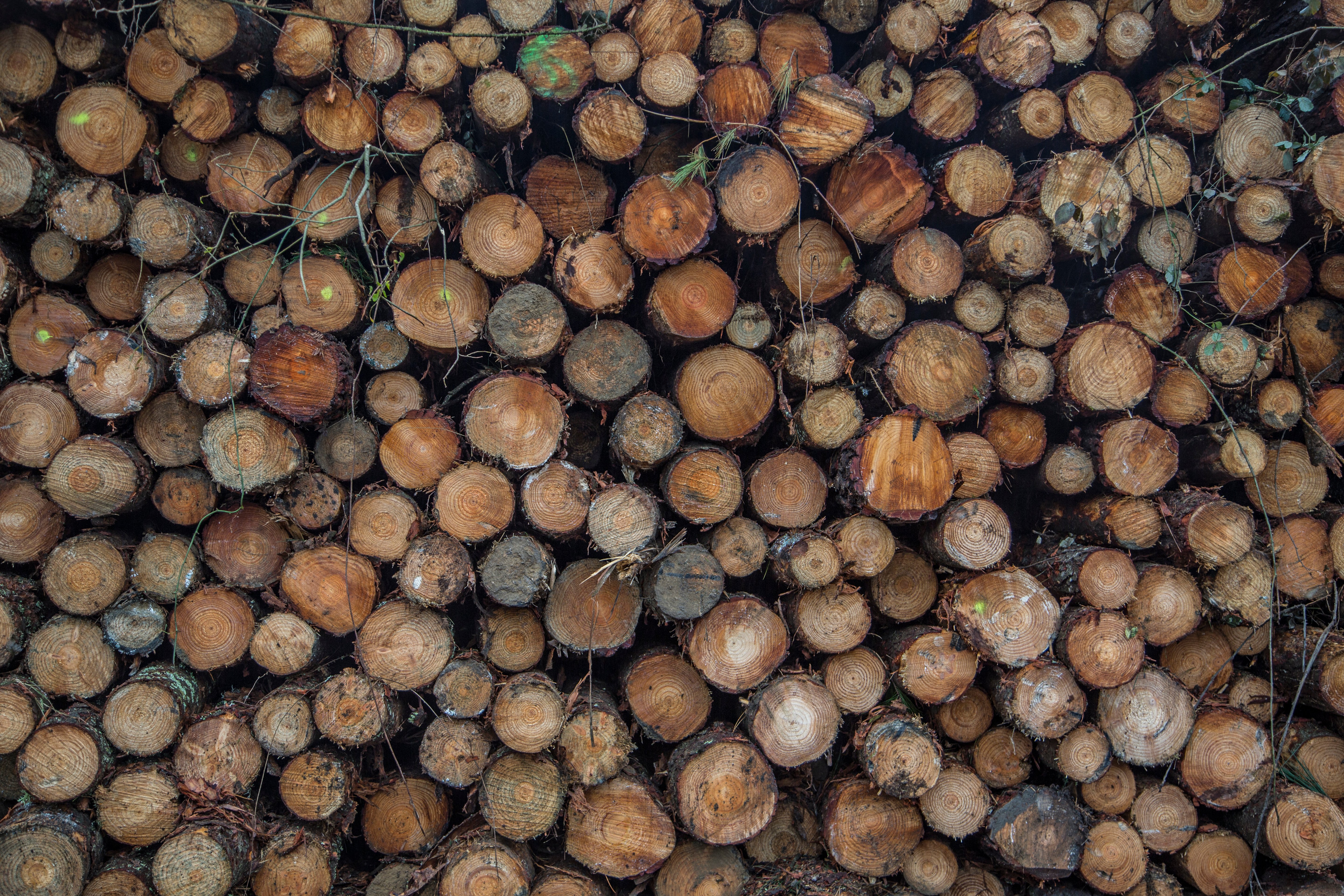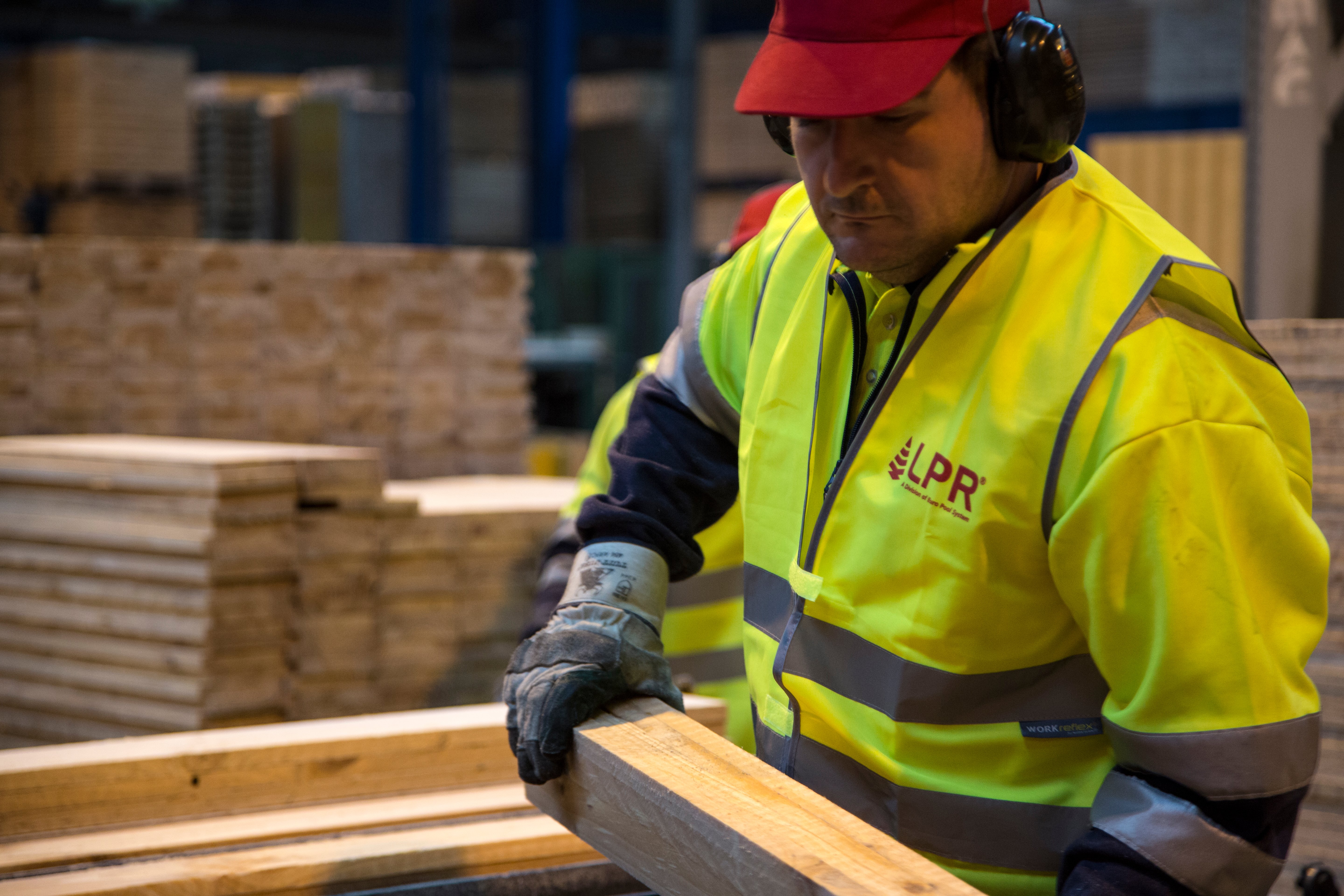The issue of deforestation is a sensitive subject and an important ecological concern in our society.
Wood, paper and cardboard are widely used in industry, as raw materials, packaging, fuel and even pallets. As a result, the responsible use of wood resources has never been more important.
PEFC certification was introduced a little over 20 years ago to promote sustainable forest management.
Choosing to work with companies that hold PEFC certification means aligning your company with a more environmentally responsible approach, whilst still meeting consumer expectations and protecting the ecosystem.
In this article we will find out exactly what PEFC certification is and how you can integrate it into your supply system.
Quick Navigation:
I. PEFC certification: everything you need to know
II. Why choose PEFC certified wood?
III. LPR - La Palette Rouge, PEFC certified company
I. PEFC certification: everything you need to know
1. The importance of forests
The forest ecosystem plays an important role for the global environment, people and economy. We depend on the preservation of forests for our survival, from the air we breathe to the wood they provide for us.
Here are some examples of the key importance of forests:
-
Forests alone are home to nearly 80% of terrestrial biodiversity.
-
They provide more than 13 million jobs worldwide and the forestry sector represents 1% of the GDP of the European Union.
-
The forest contributes to slowing down climate change by being the second biggest absorber of C02.
-
They protect stream courses by slowing the amount of erosion and chemicals reaching streams. They also serve as a barrier in the event of natural disasters such. as extreme rain or flooding.
Furthermore, wood is an important material for both industry and the economy. It is particularly essential for manufacturing the pallets used to transport goods. This is why LPR - La Palette Rouge ensures that the wood it uses comes from sustainably managed and PEFC-certified forests.
2. Definition of PEFC certification
The Program for the Recognition of Forest Certifications (PEFC) is a forest certification created in 1999 in Paris which promotes the sustainable management of forests.
This certification is considered the most important initiative of the last decade to promote better forest management. It certifies the sustainable management of the forest and the respect of its economic, environmental and social functions.
It covers logging and replanting practices, but also the social and economic well-being of workers and local communities. It also ensures the renewal of the forest after felling, while protecting and preserving the soil, fauna, flora and water of the natural environment.
By purchasing PEFC-certified products, buyers can be certain that the products they are purchasing come from responsible sources and that they are participating in the sustainable management of forests.
Today, more than 74,500 forest owners and more than 3,100 companies in the forest-wood-paper sector have chosen PEFC certification for the management of their forests.
Finally, forest certification is implemented through two distinct but related processes: sustainable forest management certification and chain of custody certification.
3. The Chain of Custody
The objective of the PEFC chain of custody is to ensure that all products bearing the PEFC logo or sold as being PEFC certified have been produced using raw materials from certified forests or that their origin is not from a controversial source.
The Chain of Custody aims to follow and control the flow of PEFC products within a company and also between two or more companies. Like a cold chain, a PEFC Chain of Custody cannot be broken. The Chain of Custody essentially tracks certified wood from the forest to the consumer.
The chain monitors the operating methods that the company implements, checking its flow monitoring, and emphasising the risk management of a possible supply of controversial wood. All these elements must be tracked.
This Chain of Custody allows companies to market PEFC-certified products. If they do not have the double certification, they cannot use the PEFC accreditation label. Today, 70% of consumers think it is important for companies to use PEFC certification to prove that the wood they use comes from a legal and sustainable source.
The PEFC certification qualifies the compliance of the Chain of Custody implemented by the company. This Chain of Custody certificate is issued by an independent certification body (FCBA, AFNOR Certification, and SGS being the most prominent) for a period of 5 years, with an annual follow-up audit.
Two methods are used to trace PEFC product flows within your company:
-
The physical separation method: this is when the PEFC material is never in contact with non-certified materials. It can be stored, identified or used separately from other products. This is the case with LPR pallets.
-
The percentage method: this is when raw materials are processed and it is not possible to distinguish certified materials from others. In this case, the company must calculate its percentage of PEFC materials: (Quantity of certified raw material/Quantity of total raw material) × 100.
4. PEFC standard requirements
For a company to prove that it meets the PEFC Chain of Custody standards, it must meet all the certification requirements.
For example, companies in the wood and paper sector can obtain the PEFC standard if they prove that the wood they buy comes from certified forests. Additionally, there is no maximum percentage of PEFC wood used in order to be certified, but the company must commit to continuous progress in its use of certified material within its future activites.
The company must also prove its knowledge of the different origins of wood used for the manufacture and renovation of its products and/or its raw material. For this, the company must structure a Due Diligence System (DDS) allowing it to minimise the risk of timber from illegal harvesting reaching the market.
The use of declarations such as "100% PEFC certified" and "PEFC Controlled Sources" provide a guarantee of the origin of wood used, the finished product and/or the raw materials used in their manufacture.
Each operator in the control chain is responsible for verifying that its suppliers comply with PEFC practices. This principle of permanent monitoring of products, processes and suppliers guarantees the proper functioning of the Chain of Custody compliance. It is imperative that you regularly check your supplier’s certification. Should your supplier lose their certification and not inform you, you could also lose your certification.
5. Use of the PEFC logo
The use of the PEFC logo is subject to strict rules, and non-compliance may lead to the suspension of certification.
Only companies and forest owners who are PEFC certified and have obtained a license to use the logo, are authorised to use the PEFC logo on their product for commercial purposes.
To be able to use it, certain conditions must be met:
-
Pay the fees for the use of the logo
-
Use only on products made from 70% PEFC-certified raw materials.
-
Use only in line with PEFC rules
-
The license number issued to the certified company must always be used with the PEFC logo
Finally, there are 2 types of PEFC logo that can be used:
-
The “On product” logo = the logo is affixed to the product
-
The “Off product” logo = the logo may be used by the company to communicate its certification on non-product chain of custody items.

II. Why choose PEFC certified wood?
Sourcing certified wood ensures it is legal, responsible and ecological in origin.
1. The benefits of PEFC certification
PEFC certification has many advantages.
In environmental terms, it ensures:
-
Sustainable forest management which reduces environmental risk such as fire
-
Preventing deforestation and climate change. It preserves the fauna and flora, water and soil
-
Replanting to compensate for the wood used
PEFC certification also has economic advantages
-
It improves productivity, reduces exploitation and use of forests
-
The PEFC label encourages purchase: only 6% of British people surveyed say they do not pay attention to the environment and social practices in their consumption
Finally, it has advantages at the social level.
-
It creates jobs
-
It ensures social well-being because the Chain of Custody is accounted for
2. Why choose PEFC-certified materials for your industry?
Choosing PEFC-certified raw materials for your industry allows you to assert your company's environmental credentials. It also increases sales by meeting the ecological expectations of consumers and thus builds customer loyalty. This certification enhances the image of your brand.
You can use PEFC wood or processed products for many things. For example:
-
your paper or cardboard packaging
-
your boiler room
-
your joinery
-
etc
PEFC wood is beneficial to your industry. It is 3% more expensive but generates more sales because it is more engaging . Consumers are more inclined to buy PEFC products.

III. LPR - La Palette Rouge, PEFC certified company
LPR - La Palette Rouge is a pallet pooling company. Wood is therefore at the heart of our business, which is why we have chosen to use PEFC-certified wood. LPR was the first pallet pooling business to become PEFC certified.
1. PEFC certification of LPR - La Palette Rouge
LPR's objective is to ensure responsible purchasing and sustainable forest management - a key element of corporate social responsibility values. Not only ours, but also those of our customers.
Indeed, a large number of manufacturers only use PEFC-certified wooden pallets in their supply chain!
Our environmental policy is signed by our Managing Director and all LPR subsidiaries have signed a letter of commitment to PEFC Chain of Custody certification.
Our PEFC certification is valid for 5 years and subject to conditions of use and strict management rules.
2. LPR - La Palette Rouge Chain of Custody
Due to its pan-European size, LPR is audited according to the model: “PEFC Chain of Custody implementation for a multi-site entity”.
This involves:
-
The performance (by an external certifying body) of PEFC audits, at LPR's head office in Balma (France) as well as audits of all subsidiaries for a period of 5 years. There is an initial audit and 4 follow-up audits.
-
Each year, several service centres are also audited in each country, selected by the external certification body, to verify the correct application of the requirements of the PEFC standard.
2. PEFC-certified LPR - La Palette Rouge products
PEFC certification covers the entire range of LPR wooden pallets.
LPR has been PEFC Chain of Custody certified since 2010. We ensure that the wood used to produce and repair our pallets comes from forests managed in an environmentally and socially responsible manner.
Choosing LPR pallets means your supply chain becomes more sustainability-focused. LPR offers a number of different pallet formats, suitable for the supply chain. In addition, by choosing pallet pooling, your business becomes part of the circular economy – a more responsible ecological approach than purchasing pallets.
Conclusion
To conclude, PEFC certification plays an essential role in the preservation of forests and in the fight against global warming. Becoming PEFC certified means assuming your environmental and social responsibility and committing to the preservation of the planet. It also means that you are meeting the demands of consumers who trust the PEFC label and wish to engage in more responsible acts of consumption.
If you would like to discuss your logistics issues with our business experts, you can contact them here. You can also access our other blog articles to learn more about the supply chain, pallet pooling and circular economy.


